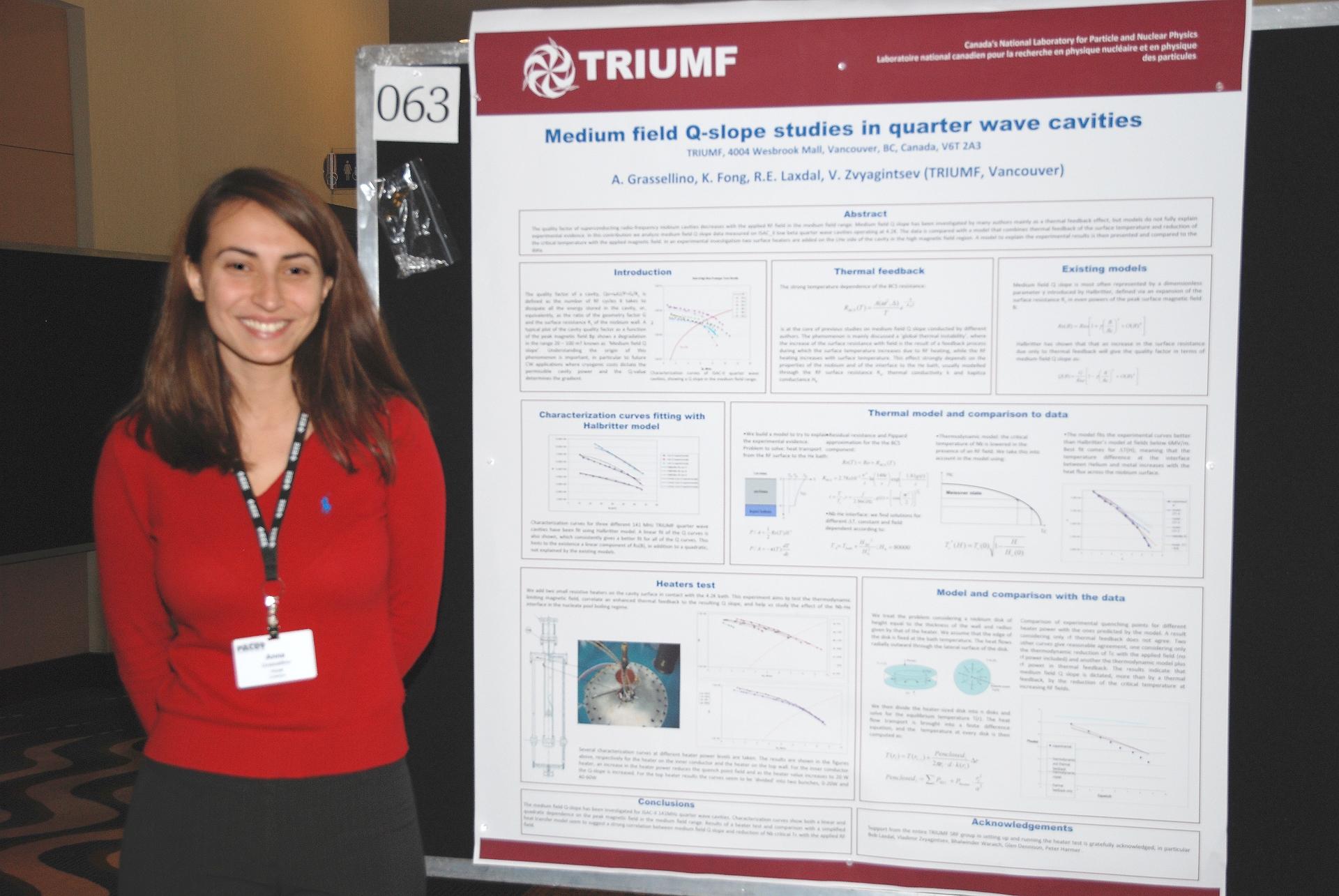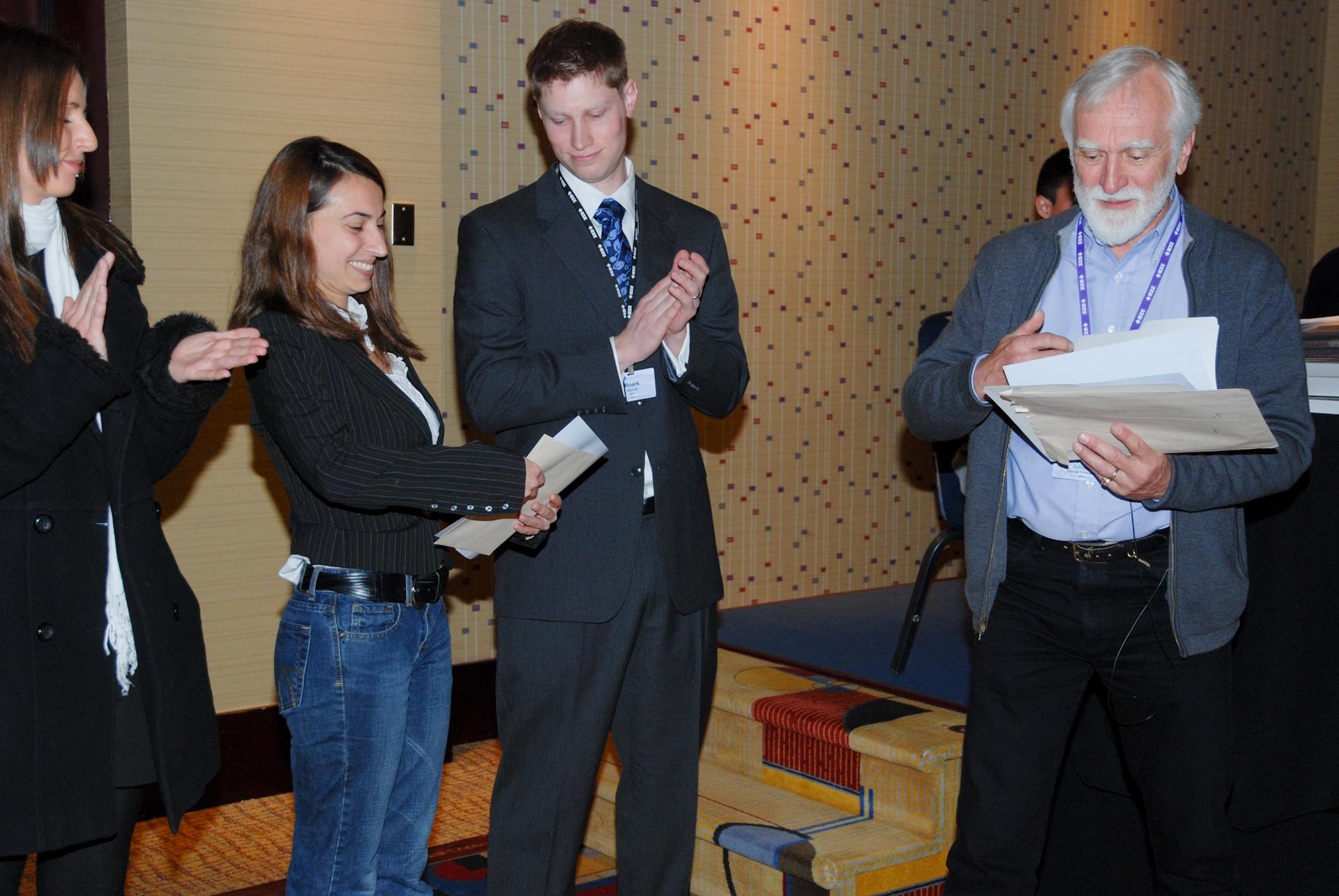A recent trip to the 2009 Particle Accelerator Conference (PAC09) has given Anna Grassellino something to celebrate! The research she has been conducting with the Superconducting Radio Frequency (SRF) group at TRIUMF over the last few months on medium field Q-slope mechanisms won her a prestigious first prize at the PAC09 student poster session. Over 100 other students from around the world presented and the posters were judged by an international panel of experts in the field of particle-accelerator science.
Anna completed her Bachelor of Science in Engineering and a Masters in Electronic Engineering at the University of Pisa, Italy. From there, she went on to obtain a second Masters Degree in Physics at the University of Pennsylvania. Anna is currently a fourth year Ph.D. student in Physics at the University of Pennsylvania and is working on her thesis here at TRIUMF with the SRF group, under the supervision of Professor Nigel S. Lockyer and Robert Laxdal.
"The work I presented at PAC09 aims at gaining a better understanding of the surface properties and behavior of superconducting radio frequency (SRF) cavities with increasing electromagnetic fields" explained Anna. RF cavities are structures that provide electric fields for the acceleration of particle beams produced by RF currents induced on the conducting walls of the structure. When cooled to cryogenic temperatures, the electrical resistance to RF currents drops to near zero and extremely high accelerating fields can be supported for very little dissipated power. The surface resistance, though extremely small, increases with the applied RF fields and reduces overall performance or the 'Q' (Quality Factor) of the cavity. The origin of Q-slope with increasing field is only partly understood and it is the object of Anna's work. Understanding and solving this Q-slope will allow scientists to design cavities to increase the accelerating fields or reduce power consumption and hence lower costs. Major new projects for high energy physics, nuclear physics or synchrotron radiation sources are now being discussed, putting tight constraints on cavity performance.
Anna, working with the SRF group at TRIUMF, tested the conventional models by using small DC resistors to heat the cold cavity at key locations. The tests allow a correlation between surface resistance, cavity temperature and RF magnetic field. The results point to a better understanding of the origins of the enhanced resistance.
Like many researchers and scientists, Anna's fascination with science began as a child. "In middle school," she explained, "my math teacher used to quote Galileo, 'Mathematics is the language with which God wrote the universe,' and from then on I knew I wanted to learn that language." While completing her Masters at the University of Pisa, Anna went on to discover her interest in accelerator science during her time as a summer student at Fermilab. "I felt that accelerator physics would match my skills with my will to make a contribution in a field with applications ranging from very fundamental physics to condensed matter, biology, chemistry, and medicine," said Anna.
When asked about her favorite part of research, what motivates her, she replied, "The quest for the new, the unexplained, the unknown. It's making a contribution and at the same time pushing your own limits as much as you can." After the completion of her thesis on SRF, Anna would like to continue doing research in the field of accelerator science and hopes to start teaching physics, something she has always loved doing.
Anna receives her award from Stan Schriber, Conference Chair for PAC07
-- Meghan Magee, Communications Assistant


